
Serving the Dallas community for over 40 years













Serving the Dallas community for over 40 years















As we all prepare to celebrate Thanksgiving, I’ve become fixated on gratitude. In fact, I think it should be called Gratitude-Giving Day instead, because that term seems to capture the deeper, more significant and intrinsic meaning and feeling of the holiday. Gratitude is the quality of being thankful, a readiness to show appreciation for and return kindness. It’s an attitude, a frame of mind, a viewpoint—a decided way of think ing or feeling about someone or something, typically one that is reflected in our behavior.
Gratitude is also a state of being, something long-lasting and definitional of who we are, rather than just something we do. In fact, our instruction manual, the Bible, has a lot to say about gratitude. It’s most simply and clearly stated in 1Thessalonians 5:18: “Give thanks in all circumstances; for this is the will of God in Christ Jesus for you.” It looks like we were built for gratitude.
Thankfulness is a reaction—a temporary emotional response—whereas gratitude is a chosen and desired state of being that doesn’t depend on an action by something or some one else. Although gratitude and thankfulness are closely related, gratitude gives us sus tained feelings of satisfaction and well-being. Practicing gratitude has proven to offer many benefits. While it is good that we have a holiday devoted to togetherness and enumerating the things we are thankful for, I’m choosing to practice gratitude every day, because it stays with me longer, gives me joy from the inside and out, and most of all, positively impacts everyone I come in contact with.

In our Inspiration department, “Gratitude is Good Medicine,” Mahida Saeed encour ages us to make gratitude a daily practice. That includes keeping a gratitude journal and naming 10 things you’re grateful when you wake up each morning. In my gratitude jour nal, I write at least three things I’m grateful for. Often, it’s many more than three, and then some days, I’m pressed to come up with three. It’s on those days, when I have to dig deep to come up with things I’m grateful for, that I get the most out of this practice. Those are the times that make me realize God’s daily blessings—a good night’s sleep; a long, elevating, satisfying conversation with family or friends; a good workout to help me take care of my body and my health; an enlightening chat with a client or colleague; or being able to help someone else achieve their goals or help them in some other practical way.
To me, gratitude is the opposite of anxiety—they can’t coexist in the same space and time. In fact, Ronica O’Hara recommends some gratitude practices in our Healing Ways department, “12 Quick Fixes for Anxiety.”
This month’s issue is all about well-being, the bedrock of mental health, which is un breakably connected to physical heath; each affects the other. We also have an eye-opening article on the gut-mind connection by Dr. Phyliss Gee, a North Texas functional medicine practitioner. This month’s Conscious Eating department is a perfect complement to Dr. Gee’s article, with some “mind-lifting” recipes that are sure to please.



As you begin this year’s holiday season in the new normal, with the constant barrage of negative news designed to steal your attention, we hope that you too, will focus on well-be ing—that is, the art of judging life positively and feeling good and healthy.
We also hope you will find much here to help you on your journey to living a healthier life on a healthy planet, and that you will have a blessed and joyful Thanksgiving. Remember to make that attitude of gratitude last as long as you can—at least for the next two months.




Blessings until next month,
Contact me at:















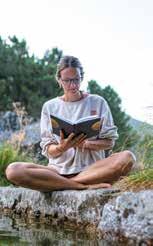
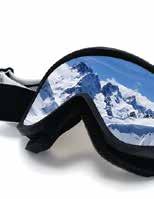




































The Dallas YMCA Turkey Trot, sponsored by Capital One Bank, will be held on November 24. Times are 8:15 a.m. Junior Trot; 8:30 a.m. eight-mile or 5K (timed and untimed); and 9 a.m. eight-mile or 5K (untimed). The Trot starts at Dallas City Hall. It has grown into the undisputed “Way to begin Thanksgiving Day” for the Dallas running community.


Funds raised will support YMCA Community Health programs that allow North Texas residents access to a health ier lifestyle. The Y will support commu nity health programs by contributing funds from this year’s Trot to families that need services the most.

Registration fees are $15 to $49 with early registration discounts. For a course map, more information and to register, visit YMCADallas.org/turkeytrot.
EarthX Film, Dickies Skateboarding and The 4DWN Project will present an event featuring pro skaters Kareem Campbell and Mike Crum, music, skate con tests, workshops, farming, food, drinks and community from 11 a.m. to 8 p.m., November 5.

Local and professional skaters from around the world will show off their skills in a Pro Vert Ramp Best Trick Contest and mentor young and aspiring skaters from community groups, local shelters and the greater Dallas area. Their mission is the melding of a skatepark with a mission to fight for food security.
There will be film screenings with filmmaker Q&A, raffle prizes, guest speakers and beverages by partner Fat Tire, the world’s first carbon neutral beer, plus organic, plant-based functional teas from Drink Weird.
Tickets are $10 in advance and $15 at the door. For more information, visit 4dwnproject.org.



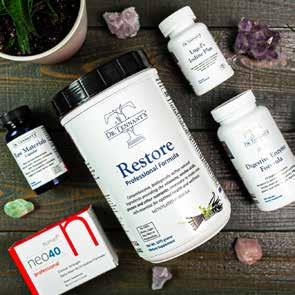


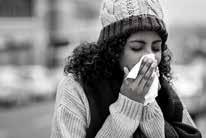


Neil Kaufman, the Sustainable Dallas College urban agriculture assistant director, will attend the 12th annual Sustain ability Summit on November 4, online or in person (Brookhaven Campus), to discuss how to start or improve a garden.

He says, “You have just finished a docu mentary on food waste or reading an article about personal food resiliency, and have de cided that you are now a gardener. Welcome to the club! The first questions you should be asking are: What do I want to get out of my garden? How much time, money and space am I willing to put into my garden? And exactly how delicious would carrot cake taste if I used carrots that I grew and harvested myself?”
First, calibrate inputs with the outputs. The kind of backyard garden that feeds the neighborhood requires an immense amount of time, talent and luck. However, if all we really want is to have a few fresh herbs on hand, there is a lot less to consider.

The resources question is the most critical. Highly productive gardens are not free. They require lots of weeding, watering, fertilizing, quality supplies and endless learn ing and patience. This takes time, money and space. Quality tools and equipment will go a lot further than their cheaper counterparts.


But don’t imagine buying the way to bumper crops; we still have to work for it.
When scouting for a space, keep in mind that vegetable gardens generally re quire more sun than the average ornamental plant—six to eight hours of full sun per day. If we don’t have a yard, consider a commu nity garden. This all may seem daunting, so start small. Try planting a few rows and expand from there.

It is very important to plan ahead by at least three months. This gives enough time to amend the soil, mitigate weeds and plant seeds, rather than more expensive transplants. Some crops, when planted early enough, can even produce a second round of vegetables per season. Consult the Texas AgriLife Extension Vegetable Planting Guide (Tinyurl.com/NTX-PlantingTimes) for specif
ic information on when and how to plant. Kaufman shares, “There’s still much more to consider before replacing your entire backyard with raised beds. For example, you should be roughly familiar with choosing crop varieties, organic fertilizer do’s and don’ts, integrative pest management and season extenders, to name a few. Successful gardeners are always learning, both from others and from the mistakes they have made in the past. Patience and curiosity are important virtues for gardeners to practice. The discipline comes from imagining how that garden-fresh carrot cake will taste.”
Register at DallasCollege.edu/sustainability/ summit (choose the “In the Environment” breakout session.)


Dustin Strong, chief clinician and owner of Strong on Health, a private holistic health and wellness center in the Dallas/Fort Worth area, will facilitate a retreat from 5 p.m., November 4, through 1 p.m., November 6, at Crazy Wellness Retreat, in Mineral Wells. He says, “The Crazy Wellness Retreat is the transformative burnout remedy your soul is craving.” Strong’s immersive approach to wellness includes access to a variety of life-en hancing workshops and activities that reduce stress, increase mental focus, revive the senses and strengthen overall well-being. Strong hosts four retreats a year, focusing on four pillars of health: movement, mindfulness, nutrition and sleep.
Each retreat will incorporate all pillars, because each is needed for a healthy mind, body and soul, but will have a primary focus of one pillar. The November 4 to 6 retreat is focused on movement. The weekends are developed to build real practices for healthy habits that slow down the accumulated effects of stress. “This is not the typical fluff, glitter and foot massage wellness retreat, but a time to detach, decompress and experience the steps needed to become your best, happy, healthy self,” advises Strong.
Retreat fee starts at $900. Location: 401 N. Oak Ave., Mineral Wells. For more information, visit CrazyWellnessRetreat.com.


EarthX has built a decade of pro gramming around a wide variety of environmental topics and is inviting new voices to join the forum for a range of environ mental ideas and solutions.
Speaker and panel proposals that seek to establish room for good faith conversa tion and debate between varying view points and perspectives are welcome.
The 11th annual green awards gala, hosted by Green Source DFW and its parent nonprofit, the Memnosyne Institute, will be held from 2 to 4 p.m., December 4, at a new venue—the Fort Worth Botanic Garden, instead of the Dallas Arboretum. This 110-acre cityowned park is the oldest botanic garden in the state.

It is located next door to an inter nationally recognized “plant museum”, the Botanical Research Institute of Texas, which took over management of the Gar den in 2020. Attendees can also purchase tickets to Lightscape, an outdoor holiday exhibit featuring a one-mile illuminated path winding through the Garden.
Tickets are $25 or $35 with a tour of the garden. Lightscape is $18 to $28. Location: 3220 Botanic Garden Blvd., Fort Worth. For more information, call Green Source DFW editor Julie Thibodeaux at 817-732-0722 or email Julie@GreenSourceDFW.org.
A submission does not guaran tee acceptance, but submitters will be provided an acceptance or decline email after the curator selection process concludes. The event runs from April 20 through 23, 2023, at Fair Park, in Dallas.
Topics include agriculture, farm, ranch, forest, B2B and corporate impact, built environment, E-capital summit, energy, environmental justice, fash ion, global islands, global youth, green sports, hemp, indigenous and rainfor ests, Latin America, law, Mexico, oceans, philanthropy, rivers, lakes, groundwater, wetlands, Rocky Mountains, transporta tion and wildlife conservation.
A team of curators will review the sessions that align with their back ground, and then make final selections via a curator committee.
Make submissions at EarthX.org/ earthx-2023 by Nov. 18. For more infor mation, email Karen Young at Karen. Young@EarthX.org
Gratitude is the most important human emotion. Are you tired of living life with stress and commotion? It’s time to Live a Lifestyle of Wellness. You have the ability to change direction. Stress management, exercise, nutrition and intermittent fasting is for your protection. How do you start and what should you do? Follow me on YouTube, FB and Instagram. The Dr. CBD and Nutrition Education Series will teach you. When you’re in the neighborhood stop by our retail store. There’s a plethora of CBD products to see and you can learn so much more. You will be greeted with kindness as soon as you open the door. If your interested in learning about vitamin supplements and CBD then please allow me to assist you on your wellness journey.
I’m Dr. JCHill MD.

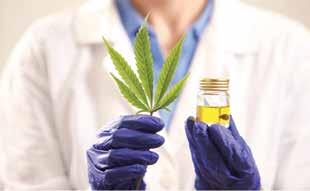
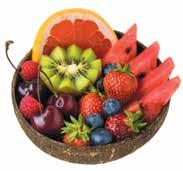


The best strategy to stay upbeat may be to reach for the fruit bowl, sug gests a new study comparing the habits and mental states of 428 people published in the British Journal of Nutrition. Researchers at the UK’s Aston University found that the more often people ate fruit, the lower they scored for depression and the higher for mental well-being. The frequency of fruit con sumption seemed to be more important to psychological health than the total amount consumed. People that ate savory snacks such as potato chips, which are low in nu trients, were more likely to report more frequent memory lapses and greater levels of anxiety and depression. The researchers found no connection between eating vegeta bles and psychological health. Nutrients can be lost during cooking. “As we are more likely to eat fruit raw, this could potentially explain its stronger influence on our psycho logical health,” says lead author Nicola-Jayne Tuck.
In another study, researchers from the UK’s University of Reading gave 478 young adults either high doses of vi tamins B6 or B12 or a placebo. After one month, they found that 100 milligrams of the B6 (about 50 times the recom mended daily allowance) significantly boosted gamma aminobutyric acid, which inhibits excitatory impulses in the brain, and reduced self-reported anxiety and depression levels. B12 had no such effects.

Although high-fiber diets reduce the risk of heart attack, stroke and cardiovascular disease, the latest research from Stanford University indicates that not all fibers are equal in their effect on different species of probiotics in the intes tines. Arabinoxylan, which is common in whole grains, was found to reduce cholesterol naturally and was easier to di gest than long-chain inulin, which is found in onions, chicory root and Jerusalem artichokes. Commonly used for weightloss products, inulin was linked to a modest decrease in inflammation markers and an increase in Bifidobacterium, a “good” gut microbe; however, at high doses it increased inflammation and raised the possibility of liver damage.


Immunity supplements may not be all they claim to be, according to a new study in the Journal of the American Medical Association. Re searchers conducted liquid chromatography and mass spectrometry tests on 30 of the bestselling, four-star-and-up immunity products on Amazon and found that only 13 contained the exact ingre dients listed on their labels. Thirteen were missing some of the listed ingredients and nine contained ingredients not listed on the labels. Missing ingredients were mainly plant extracts such as aloe vera, astragalus, eleuthero, ginger root and slippery elm. Added ingredients included black rice seed in elderberry extracts and pantothenic acid.


To protect against memory loss, simple stretching and balance exercises work as well as hard-driving aerobics, concludes a new study from Wake Forest University. The study enrolled 296 sedentary older adults with mild cognitive decline such as forgetting dates, keys and names. Those that performed simple stretching routines for 120 to 150 minutes per week experienced no memory decline in a year’s time, as measured by cognitive tests and brain scans that showed no shrinkage. These results matched the outcome of people that did moderate-intensity aerobic training on treadmills or stationary bikes four times a week, striving for about 30 to 40 minutes of a heightened heart rate. A control group of equally matched people that did not exercise did decline cog nitively. The people that exercised were supervised by trainers at local YMCAs, which may have helped them stay motivated, say the researchers.
After reviewing hun dreds of studies on nutrition, diseases and longevity in laboratory animals and humans, the optimal diet for longevity has “lots of legumes, whole grains and vegetables; some fish; no red meat or processed meat and very low white meat; low sugar and refined grains; good levels of nuts and olive oil, and some dark chocolate,” reports University of Southern California ger ontology professor Valter Longo. According to the literature review he and others authored for Cell, a day’s meals should ideally occur within a window of 11 to 12 hours, allowing for a daily period of fasting. A five-day fast or fast-mimicking diet every three to four months was also suggested to help reduce insulin resistance, blood pressure and other risk factors for those with increased disease risks.


The world’s biggest search engine has taken a key driver of global warming out of the carbon calcu lator embedded in the company’s Google Flights search tool, making jour neys appear to have much less impact on the envi ronment than before. Dr. Doug Parr, chief scientist of Greenpeace, says, “Google has airbrushed a huge chunk of the aviation industry’s climate impacts from its pages.”
With Google hosting nine out of every 10 online search es, this could have wide repercussions for people’s travel decisions. In July, the search engine decided to exclude all the global warming impacts of flying except CO2 following consultations with its industry partners.
Kit Brennan, a founder of Thrust Carbon, a UK company that helps businesses reduce the effect their travel has on the climate, fears consumers could come to believe that non-CO2 impacts on the climate are not relevant in the longer term, despite the science that contradicts this view. That would mean up to 1.5 percent of the warming caused by human activity would be ignored, and the pressure on airlines to reduce their emissions would be cut according ly. Some experts say Google’s calculations now represent just over half of the real impact of flights on the climate.

According to a new report (Tinyurl.com/Chemical Recycling) from the non profit Global Alliance for Incinerator Alternatives (GAIA), 20 states have passed bills to exempt chemical recycling facilities from waste management requirements, despite sig nificant evidence that most facilities actually incinerate the plastic they receive.
The petrochemical industry, as represented by the American Chemistry Council, has been lobbying for state-level legislation to promote “chemical recycling”, a process that critics say is recycling in name only. Their goal is to reclassify chemical recycling as a manufacturing process, rather than waste disposal, with more lenient regulations concerning pollution and hazardous waste.
GAIA Policy and Research Coordinator and author of the report Tok Oyewole says, “These facilities are in actuality waste-to-toxic-oil plants, processing plastic to turn it into a subpar and polluting fuel.” The report calls for federal regulation to crack down on the plastic industry’s misinformation and affirm chemical recycling’s status as a waste management process.
The U.S. Environmental Protection Agency is considering whether chemical recycling should be regulated under Sec tion 129 of the Clean Air Act, which would define chemical recycling processes as incineration, potentially short-circu iting the petrochemical industry’s state legislative strategy, although Oyewole says it’s unclear whether the agency’s determination would override existing state legislation.
Concrete consists of water, cement and an aggregate such as sand or gravel. The aggregate has to be mined from the ground, and is now in short supply in many parts of the world, while discarded tires can be partially recycled, but are often burned or relegated to landfills.
Attempts to replace some of the aggregate used in concrete with crumbled, used tires has been stymied by a bonding problem because pores in the rubber fill with water when the concrete is first mixed, and become empty holes as the water evaporates and the concrete sets.

As reported in the journal Resources, Conservation & Recycling, scientists at Australia’s RMIT University have produced good-quality concrete in which all of the aggregate has been replaced with tire particles. They started with wet concrete in which all the aggregate is comprised of tire particles, then placed it in special steel molds as it set to place pressure on the concrete, compressing the particles and the pores within.
Once the concrete dried and set, the cement had bonded much better to the tire particles. When compared to previous 100-percent tire-aggregate concrete produced by conventional means, the preloaded concrete exhibit ed 97 percent, 59 percent and 20 percent increases in compressive, flexural and tensile strength, respectively.
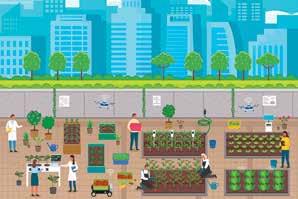
A new study led by Lancaster University researchers shows that ur ban gardens and hydroponics can thrive and may exceed the yields of rural farms. Professor Jess Davies, project lead for the Rurban Revolution project that developed this study, says, “Urban food growing is often dismissed as something that cannot meaningfully contribute to food security.”
The paper compiled studies on urban agriculture from 53 countries to find out which crops grow well in cities, what growing methods are most effective and which spaces can be used for growing. It turns out that urban yields for crops like cucumbers, tubers and lettuces can be two to four times higher than conventional farming. Cost efficiency remains an open question and important factor.
Most studies on urban agriculture focus on private and community gardens, parks and field growing operations. This one includes “grey” spaces in cities that are already built, but could be used for growing, such as rooftops and building facades. Dr. Florian Payen, lead author and researcher from the Lancaster Environment Centre, says, “Surprisingly, there were few differences between overall yields in indoor spaces and outdoor green spaces, but there were clear differences in the suitability of crop types to different gray spaces. You can’t exactly stack up apple trees in a five- or 10-layer-high growth chamber.”

Facing threats from invasive pests, climate change and habitat loss, up to 135 tree species—about one-sixth of those found in the conti nental U.S.—could be lost forever. Only eight of them currently enjoy federal pro tection. In a study published in the journal Plants People Planet that focused on 881 tree species native to the continental United States, researchers evaluated how endangered each tree is accord ing to criteria developed by NatureServe and the Interna tional Union for Conservation of Nature. Murphy Westwood, vice president of science and conservation at the Morton Arboretum, in Lisle, Illinois, and lead author of the study, says, “That’s a lot of species.”
Noah Greenwald, endangered species director for the Tuc son-based Center for Biological Diversity, notes that trees play foundational roles in ecosystems. When they die out, whole swaths of biodiversity can perish along with them, as well as the ecosystem services that humans depend on. He says, “Trees and forests are really the bench that we all rest on.”
Leigh Greenwood, a forest specialist at the Nature Con servancy, believes that preventing new tree killers from reaching the U.S. is critical, saying, “This paper is very much a call to action to bolster the prevention strategies that we have against the entry of new forest pests and pathogens.”
U.S. Environmental Protection Agency data shows the difference in nighttime temperatures in heat island areas can be as much as 22 degrees warmer than temperatures measured outside such locations. This leads to more energy consumption, greenhouse gas emissions, air pollution and other harmful effects.
Cool pavement is a road treatment made with no harmful chemicals—just asphalt, water, an emulsifying soap, mineral fillers, polymers and recy cled materials—applied on top of existing asphalt pavement. Because the surface reflects, rather than retains heat, it has the potential to offset rising nighttime temperatures.
In 2020, portions of eight neighborhoods in Phoe nix received cool pavement asphalt coating treat ment in areas already in need of pavement preserva tion. The city partnered with Arizona State University researchers to conduct scientific tests using thermal imaging by helicopter flyovers and temperature sensors embedded in the pavement surface, study ing how it could mitigate the urban heat island effect. In October 2021, the pilot program ended and cool pavement has become a regular program for the city’s Street Transportation Department.
Similarly, 1 million square feet of roads in Los An geles have been covered with solar-reflective paint in the GAF Cool Community Project, which includes colorful murals by a local artist on a basketball court, a school playground and a parking lot.
In this day and age, we have good reason to toss and turn in our beds at night. As our nation faces climate catastrophes, acrid politics, stubborn inflation, unpredictable virus variants and hot-button issues like abortion and guns, there’s good reason our collective anxiety levels are at a high pitch. A recent Yale survey found that 70 percent of Americans report being anxious or depressed about global warming, and a Penn State survey this year found that 84 percent of us say

we are “extremely worried” or “very worried” about where the country is headed. Re searchers are coining new terms: “polycrisis”, for complex, cascading crises in interacting systems, and “pre-traumatic stress disorder”, when fear of an outcome makes it as good as real to our psyches.
“It’s easy for people to feel overwhelmed now, feeling there are breakdowns and threats on many fronts. People can wonder ‘Where do I even start?’ and feel powerless and hope less and numb,” says psychiatrist Janet Lewis, M.D., a founder of the nationwide Climate Psychiatry Alliance and a University of Rochester clinical assistant professor of psychi atry. “We are part of a complex system that is moving into new ways of functioning, but there’s no way of predicting ahead of time exactly what all the features of the new ways of operating will be. That makes it impossible for us to wrap our minds around everything that is happening.”
Still, she adds, “We are also by definition part of the system, and therefore have a responsibility to do what we can. We can’t sit on the sidelines and merely hope that things transform in good directions. The situation being so serious also means that what we do now is really important.”
To move from anxiety into effective action, mental health experts advise several strategies: taking a wider perspective, building resilience through self-care and taking individual steps to make a collective difference. As the Dalai Lama encourages, “If you think you are too small to make a difference, try sleeping with a mosquito!”
News reports almost always sound dire—just like the amygdala of our brains, journalists often see their function as focusing on threats to alert us to dangers. “Still, if you take the long view of history, we are much better off than we were 200 years ago or
Barbara Easterlin, of Jackson, Wyoming, an expert on eco-anxiety who is on the steering committee of the Climate Psychology Al liance of North America. “Doing just one thing to help the planet consistently helps defeat anxiety.”
Taking action moves us into our power—as 15-year-old Greta Thunberg demonstrated by holding a sign outside the Swedish parliament. Personal actions matter because numbers add up. Only 25 percent of individuals in a social group need to make a shift before significant social change follows, conclude researchers at the University of Pennsylvania School of Engineering and Ap plied Science that analyzed a decade of societal changes in voting, health, technology and finance. Once a group reaches that tipping point, it can trigger a change in the rest of society, says study au thor Damon Centola, Ph.D., author of Change: How to Make Big Things Happen.

1,000 years ago, but it took many years to make those changes,” counsels Robert L. Leahy, Ph.D., director of the American Insti tute for Cognitive Therapy and author of the bestselling The Worry Cure and the upcoming If Only.

“We never know if something is hopeless until we have all the data, and we seldom have all the data,” he says. “And when it comes to political emotions, many of the predictions that are made by the ‘talking heads’ in media never come true.”
Leahy counsels patience: “Social change does not come about by one person doing something. That usually comes about by a long process of millions of people changing their attitudes and changing their behavior. Small efforts can be made on a daily basis that move this slow process forward. We need to take a longer view, rather than expect immediate change.”
In this ongoing process, anxiety has its rightful place. “Anxiety makes us look around, figure out solutions and act. This can abso lutely be turned into something positive,” says neuropsychologist


Fears about the shape of the planet and nation are often piled on top of our everyday living anxieties about family and finances, which can in duce emotional overload. “We all have a ‘zone of resilience’ or ‘window of tolerance’, outside of which we become more reactive, less able to function effectively. But it is not fixed. We can learn tools to ex pand it and cultivate the capacity to be with more,” says Easterlin.
Therapy can be a part of that process by challenging us to examine “the mental narratives that can exacerbate distress,” says Leslie Davenport, a climate psychology consultant and author of Emotional Resiliency in the Era of Climate Change. It’s important to find a therapist, she says, that “validates that your feelings are a normal response to an existential crisis.” She has helped develop new programs at the American Psychology Association and the California Institute of Integral Studies to train therapists in treat ing eco-anxiety. For low-cost online support, the Good Grief Net work offers a 10-step, 10-week program to help process personal anxiety and grief about climate change. People are also sitting down to share their distress at climate cafes, small local gatherings springing up across the country and globe, including some online.
Getting enough sleep, eating healthy and exercising are also key self-care strategies. When anxiety strikes, psychologists advise shifting attention from the head to the body, using such approach es as mindful breathing, dancing and grounding. Meditation, easily accessed these days through apps like Calm and Headspace, helps us to enter into what religious and spiritual teachings call “the still point within.”
Rather than “doomscrolling” when anxiety mounts, cutting back our media use can significantly lower stress levels, studies show. Wise media strategies include choosing well-established, credible news sources; reading rather than watching the news to lower its emotional impact; limiting news intake to 10 minutes once or twice a day; taking a “news fast” on occasion; and passing up sources that incessantly feed fury.
On the other hand, it’s essential to find sources for hope, an emotion important in recovery from anxiety disorders, according to a study in Behavior Therapy. Googling “good news on climate change” will bring up articles about alternative energy growth, new super-enzymes that eat plastic rubbish and black rhinos com ing back from the brink of extinction. Although dystopic books abound, others offer hope, such as Drawdown, with its sensible, scaled-down strategies to stop global warming by 2050.
Virtually no one can take on all the problems of the nation and globe at once—and the good news is that unless we hold high public office, we don’t have to. Instead, “In taking action, focus on what you are good at, what your sphere of influence might be,” ad vises Lewis. “What are you most heartbroken over? Get involved in that and allow yourself to feel really good about what you’re doing and other people are doing.”
By narrowing our focus, we can hone in on an issue and figure out our part in its solution. “We need a broad range of collective action for transformation,” says Davenport. “For climate change, a
teacher could bring social-emotional learn ing to climate education into the classroom or start an after school ‘green club’; an artist could use their creative medium to commu nicate about climate in a moving way that could engage others; a nurse could create a waste-reduction initiative within a medical setting. These efforts all have ripple effects and help to elevate each other.”
In one recent study, people were found to consume less energy if they believed their neighbors did so and personally cared about conservation. Our neighborhoods are the place to take the small, meaningful steps that address the “crisis of connection” underlying rancorous national crises, says New York Times columnist David Brooks. He advocates “radical mutuality”, saying, “Nothing we do, however virtuous, can be accomplished alone.” Through simple actions like having casual conversations around town, pitching in to help a family in crisis, bringing a salad to a block party, tutoring a child or holding a civic post, we build the warm relational bonds that strengthen communities. As we meet others that feel as strongly as we do about our issues, our numbers start building and collective action can unfold.
“Independent of political beliefs, many

people can find common values such as wanting safety for their families, a clean environment with clean waterways and recreation in natural environments,” says Easterlin.
That, in turn, helps lower our distress. A recent Yale study found that eco-anxi ety was linked to depression only among students not involved in group activities; those engaged in collective action such as being part of an environmental group, working in a letter-writing campaign or going to events or protests did not spiral downward emotionally. “Personal transfor mation and social transformation happen simultaneously. When you reach out and build community, you nourish yourself,” Brooks says.
As Thunberg has put it: “When I’m taking action, I don’t feel like I am helpless and that things are hopeless, because then I feel like I’m doing everything I can. And that gives me very much hope, especially to see all the other people all around the world, the activists, who are taking action and who are fighting for their present and for their future.”
Health writer Ronica O’Hara can be reached at OHaraRonica@gmail.com.
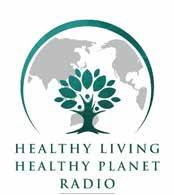
 Gellhorn
Gellhorn
Stress,
us in a pattern of

unhappiness. With our internal and external
these days with negativity, being optimistic is more im portant
than ever before.
Gratitude is not just a feel-good word. It is an emotion expressing appreciation for what one has—a universal concept in nearly all of the world’s spiritual traditions. Practicing gratitude daily is proven to have actual physiological consequences. It helps lower inflam matory markers, influences epigenetics, improves the immune system and even helps the heart, adding years to life.
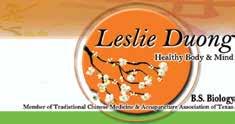
Optimism has been found to correlate positively with life satisfaction and self-esteem. “Heartfelt” emotions like gratitude, love and caring produce coherent brain waves radi ating to every cell of the body, as shown by technology that measures changes in heart rhythm variation and coherence.
Our subconscious governs 90 percent of our thoughts and actions. It shapes our every behavior. But the subconscious mind is nothing other than neural pathways that have been established in the brain as a result of past beliefs and conditioning. Our subconscious does no thinking of its own, but rather relies on our perception of the world around us, interpreting verbal and nonverbal cues.
When we consciously turn negativity to positivity from the inside-out, the neural path way associated with negativity will take time to come down fully, so it is critical to practice gratitude regularly. Upon waking in the morning, say 10 things that you are grateful for. Keep a gratitude journal. Put sticky notes all over the house with gratitude messages—on photos, light fixtures, fans, exercise equipment—to create a zone of subliminal positivity.
Remember that our perspective can reflect either our pain or our power. That choice is in our hands. Know what you are grateful for each day.

Madiha Saeed, M.D., ABIHM, is the bestselling author of The Holistic RX, an international speaker, founder of HolisticMomMD.com and director of education for KnoWEwell.




 by Randy Kambic
by Randy Kambic
Whether it’s the thrill of alpine skiing down the side of a high mountain with breathtaking views or the serene pleasure of Nordic cross-country skiing in a nearby park, strapping on skis and swooping off burns lots of calories, makes winter more enjoyable in diverse settings and accommodates all ages and skill levels.
According to the National Ski Areas Association, there were 61 million ski resort visits during the 2021-2022 season, a 3.5 percent increase over the previous season. A survey by Snowsports Industries America found that 4.8 million people cross-country skied on backcountry, public and pri vate trails, and in other areas in the 2019-2020 season.
To encourage neo phytes to try either style or for skiers wishing to do more, here are some technique, conditioning, fitness and safety tips.
Skis have parabolic characteristics: they are made to turn. When the knees are slightly bent forward, the upper legs serve as shock absorbers. “When skiers don’t sufficiently flex their knees and ankles, they can’t adequately pressure the fronts of their skis, which is where the control is,” says Mike Cyr, a ski instructor at Lost Valley, Maine, in SKI magazine’s July edition.
“Tip your skis into their uphill edges to turn up the hill until you stop,” advises Deer Valley, Utah, ski instructor Rusty Carr in SKI . The more experienced skiers get, the more they understand how long this will take, based on terrain, speed and snow conditions.

“In addition to keeping strong the more obvious muscles like quads and hamstrings, being sure your glutes are strong and not inhibited by tight hip flexors is key,” says Leigh Damkohler, a certified chiropractic sports physician and a licensed massage therapist, in Yonkers, New York. “Maintain ing a strong core and a combination of high-intensity, shortburst training, as well as sustained cardio, will keep your body prepared for skiing.” She recommends cycling, swimming, walking, running, yoga, Barre and Pilates, plus doing “wall sits, lunges or squats that are ideal to work your muscles in a parallel way to when you’re on the slopes.”
Conditions are key. A “fast track”—hard-packed snow—de mands sharp, forceful turns to maintain control. Spots on the slope that are shaded may be icy, especially early in the day. Ski ing in powder or slushy snow will slow skis down, allowing for subtler turns and carving a path down the slope. Tight-fitting, stiff ski boots are necessary to provide the most direct intention of energy to either ski. Always be alert. To avoid collisions, look before turning and listen for skiers or snowboarders that might be speeding down the slope from behind.
All that’s needed is a few inch es of snow for a recreational playground. Along with snowshoeing, cross-coun try skiing is a serene and quiet connection with nature. Some hardcore aficionados take multi-day backcountry or mountainous treks along marked trails with overnight stays in lodges, huts and cabins that may provide ski equipment.
vitaliy_melnik/AdobeStock.com
Cross-country skiers glide on thin ner skis over relatively flat terrain with their weight slightly forward and evenly distributed over both skis, moving in a scissors-like motion akin to an elliptical workout machine or power walking with a long gait. Only the toe in a sneaker-like boot is attached to the ski’s binding, so skiers lift up with each arm, planting a pole and pushing on it, and a fuller gliding motion is attained. Overall, it’s a highly aerobic exercise facilitating an extensive workout for arms and legs.
Many park and recreation departments and sporting goods retailers put on win ter festivals that feature the activity. Next year’s Slumberland American Birkebei ner, North America’s largest cross-coun try ski marathon, covering 50 kilometers from Cable to Hayward, Wisconsin, is expected to attract 13,000 participants from throughout the U.S. and overseas, plus 40,000 spectators, on February 25.

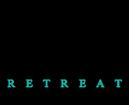
“It’s physically gratifying to self-propel yourself on snow,” says Ben Popp, exec utive director of the American Birkebe iner Ski Foundation ( Birkie.com ), which operates the event. “It’s accessible to every effort level—it’s as easy as walking. It’s not grueling—that’s a misconception.”
With either form of skiing, make sure to respect the sun and consume liquids. Surrounded by snow, both direct rays and the glare of indirect sunlight will hit unexposed parts of the face not cov
ered by goggles or sunglasses, so apply sunscreen to those spots beforehand.
“Hydration before and during your day is going to help prevent muscle cramping and fatigue,” adds Damkohler.
The slopes of alpine ski resorts are shared with snowboarders. Here’s some basic advice to give it a try:
Freelance editor, writer and avid skier Randy Kambic lives in Estero, Florida.

n A great way to decide which foot to lead with is to go with the foot used to kick a soccer ball.
n To attain and maintain proper balance, keep most of the weight over the board.
n Learn to strap into the board while standing, as this saves considerable energy, instead of repeatedly pushing up from sitting in the snow.

n Traverse evenly across the slope to learn how to ride and gain edge control. With improvement, use this skill to explore new terrain, find stashes of powder and deal with any slopes encountered.
n To execute turns in one smooth movement, start in a heel side slide slip (body facing down the hill). Press down on the front foot. As the board starts to point down the hill, rotate the head, shoulders and hips until the
 by Ronica O’Hara
by Ronica O’Hara
It is an all-too-human experience to have anxiety—feeling fear or apprehension about what might happen. A survival mechanism for our species, it can easily get out of hand in times of uncertain ty, morphing from a timely signal to a crippling, chronic condition. Happily, mental health professionals have found many useful anti-anxiety strategies to ease us through difficult moments.
“Controlling your breathing is a fantastic hack to help you move out of a
stress/anxiety response state. It’s important to try differ ent breathing techniques to figure out which ones work for you,” says Krista Jordan, Ph.D., a clinical psychologist in Austin, Texas. Many options exist such as breathing slowly into the belly; inhaling through the nose for a count of four, holding the breath for a count of seven and exhaling through the mouth for a count of eight; slowing the breath so that the in and out breaths equal ize; and placing mindful attention on our breathing until 10 breaths are completed.
Tap with the Fingers Emotional Freedom Technique (EFT) is a five-minute approach using two fingers to tap on specific points of the head and chest in a certain sequence. In one
5,000-person study, 76 percent of partic ipants found anxiety relief after three EFT sessions,
while only 51 percent experienced relief after 15 sessions of cognitive behavioral therapy.
“EFT sends a calming signal to the brain that reduces your anxiety, which allows for newfound thinking and solutions,” says Colorado Springs therapist Dana C. Avey. Simple instructions can be found online and in YouTube videos.
Whether it’s a three-page brain dump in the morning, a frantic scribbling on paper in a stressful moment or a nightly ritual in a bound journal, writing out anxious thoughts helps clarify worries and puts things into perspective, research shows. Seattle spinal surgeon David Hanscom, a chronic pain ex pert and author of Back in Control, counsels writing down in longhand whatever is on the mind using graphic and descriptive language twice a day for 10 to 30 minutes, and then promptly tearing it up to let the thoughts go.
Many soothing types of meditation can be tried out on apps like Calm, InsightTim er and Headspace, but the best-studied approach for anxiety is mindfulness, which involves focusing on the breath and body sensations while letting distracting thoughts float by. A 2017 Australian study found that just 10 minutes of daily mindful meditation can help prevent the mind from wandering and is particularly effective for repetitive, anxious thoughts. “Just be clear that having a constant stream of thoughts is fine and part of the process. It’s sadly ironic that people turn to meditation to help with anxiety, and then get anxious that they are doing it wrong,” advises Jordan.
According to the Harvard Health Letter, “Just a single bout of exercise can ease anxiety when it strikes ” Studies have proven the val ue of everything from aerobics to swimming and yoga, and it’s even better if exercising can be done outdoors, because decades of research have found that being amidst the sights, sounds and scents of natural settings lowers anxiety markers. In a recent study, walking without using a smartphone or another electronic device in urban settings just two hours a week reduced cortisol levels
21 percent in 20 minutes, “which helps to reduce the medical effects of stress, includ ing chronic inflammation, GI disorders and heart problems,” says Santa Barbara-based John La Puma, M.D., co-founder of the ChefMD health media brand and creator of MyNatureDose.com, a free, anti-anxiety walking program.
Making a deep spiritual connection—an ageold anxiety solution—can involve praying or for example, reading psalms, saying a rosary, chanting a mantra or reading sacred scrip ture. Eric Almeida, a mental health practi tioner in Bernardston, Massachusetts, rec ommends the Serenity Prayer: “God, grant me the serenity to accept the things I cannot change, the courage to change the things I can and the wisdom to know the difference.”
He says, “It doesn’t matter if you believe in God, the wisdom is useful nonetheless.”
“Sip cold water, hold ice cubes, take a cold shower, blast the AC in your face. Our body and mind are very connected, so if you can’t cool down your mind, cool down your tem perature,” advises San Diego-based marriage and family therapist Sarah O’Leary. Some people find the opposite works: taking a long, hot bath infused with essential oils like bergamot, frankincense and lavender.
Stand barefoot in grass or dirt while breathing deeply or imagine the roots of trees growing from the soles of the feet deep into the earth. “This helps ‘ground’ you or ‘root’ you, and can help you find steadiness rather than getting lost in anxiety,” says mindfulness trainer and author Joy Rains of Bethesda, Maryland.
Boston integrative medicine physician Sarika Arora, M.D., of the Women’s Health Net work, recommends vitamins B5, B6 and B12 to improve cellular energy, lower cortisol and restore equilibrium to the nervous system; magnesium to support balanced metabolism and increase feelings of calm; L-theanine, found in green tea, to lower stress hormone levels; eleuthero (Siberian ginseng) to limit
excess cortisol; and vitamin E to support hormone production and stress recovery.
Tyler Read, the San Francisco-based owner of Personal Trainer Pioneer, decided to bite the bullet by using the tools of dialec tical behavior therapy to put himself into anxiety-producing public places. “Instead of convincing myself that I was at peace or not nervous, I accepted that I was nervous. I gave myself permission to shake, sweat and feel nauseous; at times, I acknowledged that I felt like I was dying. And by permitting my self to be nervous, the anxiety decreased over time,” he says.
Relaxing music can be as effective as med ication in altering brain function, research suggests, especially if the rhythm is 60 beats per minute, which encourages the slow brainwaves associated with hypnotic or med itative states. Dancing to upbeat music like no one is watching can also chase worries away. Holistic psychotherapist Kellie Kirksey, Ph.D., of Youngstown, Ohio, suggests shak ing to a favorite song: “Begin by shaking out the hands while holding the thought, ‘I let go.’ If shaking the hands feels good, add in shaking one leg at a time. Shake the whole body while imagining yourself releasing the tension stored in your muscles.”
Merely petting a dog or cat releases the feelgood bonding hormone oxytocin into our system. “Animals speak to you in a nonverbal communication, so the interac tions require you to be present and to feel. Both allow for a meditative experience that is tremendously impactful for reducing anx iety,” says Shannon Dolan, an Austin, Texas, nutritional therapist and horse owner. “If you don’t have your own pet, look up equine therapy in your area, go to a local dog shelter, spend time with a friend’s dog or travel out to a petting zoo, where you can experience the healing power of animals.”
Health writer Ronica O’Hara can be reached at OHaraRonica@gmail.com.
 by Tricia Seymour
by Tricia Seymour
For those that want to move quickly through past traumas and issues, rapid psychotherapy techniques can assist in letting go of stuck problems in only a few sessions. Traditional psy chotherapy believed that we needed to re-live” old hurts and trau mas, but today’s rapid psychotherapy methods understand better how memories and emotions are stored in the brain.
Patients still remember the facts of a past incident, but the emotional hooks are removed. The unconscious mind controls our reactions to the situations we face every day. Rapid psychotherapy methods can be used in a therapy session by a trained mental health professional to move through painful memories quickly. Once this is done, the old patterns do not subconscious ly affect their current situation.
Rapid psychotherapy techniques include Emotional Transformation Therapy (ETT), by Dr. Steven R. Vazquez, Ph.D.;
Emotional Freedom Technique (EFT), by Gary Craig; Eye Movement Desensitiza tion and Reprocessing (EMDR) Therapy, by Dr. Francine Shapiro, Ph.D.; and Accelerated Resolution Thera py (ART), by Laney Rosenzweig, LMFT.

Emotions play an important role in our lives, and every event has a related emotional state. They can be labeled as happy or fearful, pleasant, or unpleasant. Rapid psychotherapy helps people go from victim to strong survivor in four to six sessions, shifting feelings of shame, loneliness, fear and emptiness to peace and empowerment.
Dr. Tricia Seymour, Ph.D., Ed.D., ND, LPC-S, is a licensed psychotherapist and co-founder of the Entelechea Wholeness Cen ter, located at 1201 International Pkwy., Ste. 200, in Richardson. For more information, call 972-792-9900 or visit entelechea.org. See ad on page 21.

Scientistshave discovered a natural way to kill germs fast.
Now thousands of people are using it against viruses and bacteria that cause illness.
Colds and many other illnesses start when viruses get in your nose and multiply. If you don’t stop them early, they spread and cause misery.
Hundreds of studies confirm copper kills viruses and bacteria almost instantly just by touch.
That’s why ancient Greeks and Egyptians used copper to purify water and heal wounds. They didn’t know about viruses and bacteria, but now we do.
“The antimicrobial activity of copper is well established.” National Institutes of Health.
Scientists say copper’s high conductance disrupts the electrical balance in a microbe cell and destroys it in seconds.
The EPA recommended hospitals use copper for touch surfaces like faucets and doorknobs. This cut the spread of MRSA and other illnesses by over half, and saved lives.
The strong scientific evidence gave inventor Doug Cornell an idea. He made a smooth copper probe
with a tip to fit in the bottom of the nostril, where viruses collect.
When he felt a tickle in his nose like a cold about to start, he rubbed the copper gently in his nose for 60 seconds.
“It worked!” he exclaimed. “The cold never happened. I used to get 2-3 bad colds every year. Now I use my device whenever I feel a sign I am about to get sick.”
He hasn’t had a cold in 10 years.
Users say:
“It works! I love it!”
“I can’t believe how good my nose feels.”
“Is it supposed to work that fast?”
“One of the best presents ever.”
“Sixteen flights, not a sniffle!”
“Cold sores gone!”
“It saved me last holidays. The kids all got sick, but not me.”
“I am shocked! My sinus cleared, no more headache, no more congestion.”
“Best sleep I’ve had in years!”
After his first success with it, he asked relatives and friends to try it. They all said it worked, so he patented CopperZap® and put it on the market.
Soon hundreds of people had tried it. 99% said copper worked if they used it right away at the first sign of germs, like a tickle in the nose or a scratchy throat.
Longtime users say they haven’t been sick in years. They have less stress, less medical costs, and more time to enjoy life.
Soon people found other things they could us it against.
Virus variants
Sinus trouble
Cold sores
Fever blisters
Canker sores
Strep throat
Morning congestion
Nasal drip
Infected sores
Infected wounds
Other microbial threats
The handle is curved and textured to increase contact. Copper can kill germs picked up on fingers and hands after you touch things other people have touched.

The EPA says copper works just as well when tarnished.
Dr. Bill Keevil led one of the science teams. He placed millions of viruses on a copper surface. “They started to die literally as soon as they touched it.”
CopperZap® is made in the USA of pure copper. It has a 90-day full money back guarantee. Price $79.95. Get $10 off each CopperZap with code NATA32 Go to www.CopperZap.com or call toll-free 1-888-411-6114.
Buy once, use forever.
Statements are not intended as product health claims and have not been evaluated by the FDA. Not claimed to diagnose, treat, cure, or prevent any disease.
 by Kimberly B. Whittle
by Kimberly B. Whittle
We’ve all heard the phrase, “You are what you eat,” but the connection is more than just physical because food impacts our mood, too. During the last decade, there have been an increasing number of studies exploring what’s called the gut-brain axis and the role that microorganisms in the gut play in mental health conditions like anxiety, stress, depression and other disorders.
Depression is a leading cause of disabil ity in the U.S. and worldwide. There are long-held views in medicine that depression is caused by imbalances in brain levels of serotonin—the neurotransmitter that plays a key role in regulating mood and other functions like digestion and sleep. These beliefs resulted in decades of extensive use of antidepressants, most of which boost sero tonin in the brain.
However, research by University College London, published in July in the journal Mo lecular Psychology, found “no consistent evi dence of there being an association between serotonin and depression, and no support for the hypothesis that depression is caused by lowered serotonin activity or concentrations.”
Michael Gershon, M.D., a Columbia University professor of pathology and cell biology, and author of The Second Brain, has explained to psychologists that “scientists were shocked to learn” that about 90 percent of serotonin is not created in the brain, but is actually produced in the gut and carried from there to the brain, not the other way around. This relationship is called the gutbrain axis.
A recent literature review of 26 studies suggests that imbalances in gut bacteria can disrupt the two-way communication along the gut-brain axis, leading to depression and other psychiatric issues.
“Gut health is extremely important for mental health,” says Bhavna Barmi, Ph.D., a senior clinical psychologist, relationship therapist and founder of the New Delhi-based Happiness Studio. “The traditional belief that only psychiatry and talk therapy can treat mental health has widened to include lifestyle and food, too.”
“The truth is that our food is the primary contributor of the quality and diversity of bacteria in the microbiome,” says Ishi Khosla, a clinical nutritionist and president of the Celiac Society of India. “There is an intricate relationship between the gut and the brain.” Food sensitivities, alcohol and highly processed, refined and sugary foods can lead to a lower diversity of good bacteria and increases in bad bac teria in the gut, which can trigger gut inflammation and unfavor able health conditions.
Most mood-related disorders start with inflammation of the brain as a response to inflammation in the gut. “Certain foods, like gluten, can cause an inflammatory response in the gut. Over time, sensitivi ties to gluten and other foods can lead to a ‘leaky gut’, an impairment of the gut lining that lets toxins into the bloodstream. Often, if it remains unresolved, it leads to mood-related disorders and other chronic health conditions,” says Khosla.
Clinical nutritionists and other practitioners use biochemical markers and food sensitivity tests to help identify food ingredients that trigger inflammation in patients. However, if a leaky gut is present, a food sensitivity test may not be very accurate. As Tom O’Bryan, DC, chief health officer of KnoWEwell, explains in his bestselling book The Autoimmune Fix, “When you have a leaky gut, a practitioner may do a 90-food testing panel that comes back sensitive to 20 or 25 different foods. And then the patient exclaims, ‘Oh my God, that’s everything I eat.’ Well, of course it is, because your immune system is doing what it is supposed to do— protecting you from toxins. Once the inflammation in the gut is reduced through the elimination of wheat and other offensive foods, and the implementation of a personalized diet and proto col to heal the gut [takes place], the same food testing panel will correctly identify those few ingredients to permanently avoid.”
Kelly Brogan, M.D., a holistic psychiatrist and author of The New York Times bestsellers A Mind of Your Own and Own Your Self, as well as co-editor of the landmark textbook Integrative Therapies for Depression, recommends making three dietary changes to lift mood:

n Eliminate processed foods and food toxins
n Add whole foods, good fats and therapeutic foods
n Add fermented foods
Eating foods that are fresh, whole, simple and organic when available fuels good gut bacteria and eliminates the toxins
is the omega-3 fatty acid found in such cold-water fish as salm on and trout or taken as a dietary supplement. These fatty acids regulate neurotrans mission and gene expression, act as antioxidants and have potent anti-in flammatory properties. Good fats from pasture-raised meats, wild fish, eggs, nuts, seeds, olive oil, coconut oil and grass-fed ghee also contribute to mood regulation.
“Resetting the gut through good bacteria in probiotics and feeding the good bacteria with prebiotics is a powerful tool to fight mood disorders,” says Khosla. Fermented foods such as sauerkraut, pickles (truly fermented, not just cured in vinegar), kimchi and coconut kefir are natural sources of probiotics. They are delicious and easy to make at home.
A 2018 University of Toronto study in the World Journal of Psychiatry identified 12 nutrients to prevent and treat depressive disorders and found that the following foods had the highest levels of those beneficial nutrients: bivalves such as oysters and mussels; various sea foods such as octopus, crab and tuna; organ meats; leafy greens; lettuces; fresh herbs; peppers; and cruciferous vegetables such as cauliflower and broccoli.
Choosing what to eat is complex and affected by culture, cost, environment and taste preferences. Dietary changes can be difficult and take time, and those suffering from mood swings, depression or anxiety have additional challenges in making changes. Nutritionists advise starting small by incorporating one or two foods rich in beneficial nutrients and eliminating a highly processed or packaged food or two. Focus on incorporating a rainbow of red, yellow, orange and green foods into meals. “Food therapy to improve mood is inexpensive, free of side effects and can begin to show results within days,” says Khosla.
In view of the gut-brain axis, says Barmi, “It is imperative that from this point on, nutritionists, psychiatrists and psycho therapists work together for holistic care of the client to lead to maximum benefit.”
Kimberly B. Whittle is the CEO of KnoWEwell, the Regenerative Whole Health Hub online solution for health and well-being. Visit KnoWEwell.com.
found in packaged foods such as hydrogenated vegeta ble oils, preservatives, dyes, emulsifiers, taste enhancers and sugars that can upset the proper balance in the gut.
A powerful mood regulator

YIELD: 2 SERVINGS
SALAD:
½ cup quinoa
1 medium beetroot, grated
10-12 fresh mint leaves, roughly chopped
¼ cup fresh cilantro
2 Tbsp shelled pistachios, roasted
2 Tbsp golden raisins
1 cup water
DRESSING:
2 Tbsp extra-virgin olive oil
3 Tbsp lemon juice, adjust to taste
2 cloves garlic, adjust to taste
½ tsp roasted cumin powder
Salt and ground black pepper to taste
Honey to taste
Rinse quinoa and add to a pot. Add water and cook uncovered for around 15 minutes or until all the water is evaporated. Cover the
pan and switch off the stove. Keep covered for 5 minutes, remove lid and fluff cooked quinoa with a fork. Set aside to cool.
In a bowl, mix all dressing ingredients and set aside. Place cooled quinoa, grated beets, pistachios, raisins and chopped herbs in a large bowl. Pour the dressing, toss well. Serve cold.
Recipe courtesy of Ishi Khosla.
Blueberries contain compounds that increase beneficial bacteria in the gut, as well as antioxidant properties that are remarkable at protecting our brain. In fact, consuming 1 cup of blueberries per day for three years gets our brain working as well as it did 11 years earlier. Bananas are high in pectin, which helps to normalize movements of the large intestine. Look for gelatin powders from pastured animals.
1-1½ cups water
½ cup coconut milk
1-2 frozen bananas
1 cup frozen blueberries
2 Tbsp ground flaxseed
1 Tbsp unflavored gelatin powder
1 Tbsp high-quality fish oil
1 tsp ground cinnamon
1-3 scoops L-glutamine powder (optional)
In a blender, combine the water, coconut milk, bananas, blueber ries, flaxseeds, gelatin powder, fish oil, cinnamon and L-glutamine powder (if using). Blend until smooth. Add more water for a thin ner smoothie, if desired. Serve immediately or pour into ice-pop molds and freeze for a sweet treat later on.
Recipe courtesy of Tom O’Bryan, DC, CCN, DACBN, from his book The Autoimmune Fix

YIELD:

3 cups almond flour
6 eggs
½ cup honey
½ cup avocado oil
1 tsp baking soda

1 tsp salt
1 cup blueberries
Preheat the oven to 350° F. In a large bowl, combine all the dry ingredients—almond flour, baking soda and salt—and whisk well. In a separate small er bowl, combine the wet ingredients—eggs, honey and avocado oil—and blend until smooth.
Then pour the wet ingredients into the dry in gredients and mix until thoroughly combined. Fold in blueberries. Line cup muffin tin with paper liners and pour in batter. Bake for 15 to 20 minutes.
Recipe courtesy of Madiha Saeed, M.D., ABIHM.

All disease begins in the gut. Research has revealed that gut health is critical to overall health, and an unhealthy gut contributes to a wide range of diseases and as sociated symptoms. Two variables that are closely related that determine our gut health are the intestinal gut flora and the gut barrier. The role of intestinal gut flora or “microbiome” in human health and disease has been well studied and shown to pro mote normal gastrointestinal function, regulate metabolism, provide protection against infection by comprising 80 per cent of our immune system and support a healthy gut barrier.
Phyllis Gee, M.D.can escape into the bloodstream, where the body may mount an immune response and attack them. These attacks play a role in the devel opment of inflam mation and auto immunity, and can contribute to disease in many organs, es pecially the brain.


Inflammation in the gut may con tribute to inflam mation in the brain
gut and leaky brain include consuming inflammatory foods that are genetically modified or contain gluten; toxic expo sure to herbicides and pesticides; artifi cial ingredients in food such as sweeten ers or flavorings; highly processed diets of refined sugar, industrialized seed oils and high-fructose corn syrup; disrup tion of the gut flora by medications like antibiotics and nonsteroidal anti-in flammatory drugs; a low-fiber diet; food sensitivity; high stress; poor sleep; and physical inactivity.
Phyllis Gee, M.D., is the owner of Willowbend Health & Wellness Integrative Functional Medicine.

The gut barrier is a protective layer of epithelial cells lining the intestines that are connected by tight junctions. This gatekeeper selectively determines what gets into the body and what stays out. When this barrier becomes permeable (leaky) due to disruption of the junc tions and tissue destruction, molecules
and vice-versa. Problems in the gut like infection or inflammation can lead to a higher risk of problems associated with a leaky brain such as dementia, neurolog ical conditions, depression, or anxiety. There is likely some contribution to this problem through the vagus nerve due to poor vagal tone. The vagus nerve estab lishes one of the connections between the brain and the gastrointestinal tract and sends information about the state of the inner organs to the brain via its afferent fibers.
Some known contributors to leaky







Decadesago, environmental groups urged the banning of what are known as forever chemicals, which have been linked to cancer, compromised immune systems and hormonal imbalances, among other health issues. Today, although some of these man-made perand polyfluoroalkyl substances (PFAS) are being phased out, there’s still much to worry about.
“These chemicals are everywhere–in products, in our homes, in our drink ing water. They’re even coming down in rain,” says Mike Schade, director of the Mind the Store program of Toxic-Free Future (ToxicFreeFuture.org), a national nonprofit based in Seattle. “This is a growing public health crisis.”
A recent Environmental Working Group (ewg.org) report says that 200 million Ameri cans are likely drinking water contaminated with PFAS, and that these chemicals are even more toxic than once thought. In June, the U.S. Environmental Protection Agency (EPA) established new health advisories for these chemicals, warning about the toxicity of even lower amounts in water. The EPA is offering $1 billion in grants initially and $5 billion over time to help remove them from drinking water. Recent research has also shown PFAS detected in sludge used as
fertilizer in home gardens. “We need action at all levels of government,” Schade says. “We need states to step up. We need Congress to step up. We need big companies to step up and consumers to take action.”

Since the late 1940s, forever chemicals have been manufactured for use in products
such as nonstick cookware; waterproof, water-resistant and stain-resistant textiles; dental floss; and food packaging, such as microwave popcorn bags and fast-food containers. Firefighters also use foam that contains the chemicals. “Production and disposal of these chemicals is leading to the contami nation of drinking water supplies and surface water bodies all across the country,” Schade says. “It’s a huge issue, especially in the Great Lakes.”
“We’re talking about more than 9,000 chem icals,” says Susie Dai, Ph.D., a leading PFAS researcher and an associate professor of plant pathology and microbiology at Texas A&M University. “Because they contain one of the strongest chem ical bonds, the carbon-fluorine bond, they are very stable. That makes it difficult for the chemicals to break down and easy for them to accumulate in the environment.”
Several years ago, chemical companies began manufacturing what they deem are less-toxic PFAS. They’re known as either short-chain or alternative PFAS, and include chemicals named GenX and PFBS. “The more that scientists study this very large class of chemicals, the more that scientists find the replacement chemicals are likely just as toxic,” Schade says. The EPA June health advisories include these two new PFAS.
Meanwhile, as public concern grows, 11
states have banned PFAS in food packag ing, and Congress is considering a similar ban, says Schade. Whole Foods Market has stopped using the chemicals in food packag ing, and Keen, an outdoor shoe brand, has phased out use of PFAS in their products.
In February, Toxic-Free Future sent rain jackets, hiking pants, cloth napkins, bedding and other products marked as stain- or wa ter-resistant to independent labs for analysis. “Seventy-two percent of them contained for ever chemicals,” Schade says. Some of these products are manufactured by recreational equipment company REI, which Toxic-Free is urging consumers to write to, asking it to end the practice.
In July, Columbia Sportswear received petitions with 48,000 signatures from the Natural Resources Defense Council and other environmental organizations urging the company to eliminate PFAS from its products. Although it has begun taking steps, Columbia has yet to set a timeline or define PFAS sustainability standards.
“We can minimize the threat of PFAS contamination by turning off the tap on their use,” says Paloma Paez-Coombe, an associate of Environment Illinois, which participated in the petition drive. “One of the best ways we can do that is by getting a major brand like Columbia Sportswear to publicly lead the way.”
These actions, however, won’t fix the problem of PFAS already in drinking water. Dai and other researchers have created a new bioremediation technology using plant-based
material and fungi that could clean places where forever chemicals have been disposed. She hopes a similar concept can be applied to PFAS-contaminated drinking water.
Northwestern University researchers published a paper in August in Science showing PFAS can be destroyed using somewhat harmless chemicals called sodium hydroxide, which is the lye used to make soap, and dimethyl sulfoxide, a medicine for bladder issues. Dai says that before these new approaches, the only way to break down PFAS was to expose them to high tempera tures in an incinerator, but that is costly and still introduces harmful chemicals into the environment.
Meanwhile, the Delaware-based chemical company Chemours, a spinoff of Dupont that manufactures PFAS, has filed a lawsuit against the EPA saying the agency’s most re cent health advisory regarding PFAS is based on flawed science. Chemours is the same company that has been ordered to pay a $12 million fine to the state of North Carolina after contaminating waterways with PFAS. Schade surmises, “This is an issue that should be of concern to every American, especially when these chemicals are linked to health problems that are on the rise in our communities.”
Sheryl DeVore has written six books on science, health and nature, as well as health and environmental stories for national and regional publications. Read more at SherylDeVore.wordpress.com.
n Choose textiles and carpeting without water- and stain-repellency.
n Avoid food with greaseproof packaging, such as microwave popcorn.
n Stay away from personal care products with perfluor, polyfluor or PTFE on the label.
n Choose PFAS-free products, some of which are listed at pfasCentral.org.
n Contact businesses to ask them to stop selling products that contain PFAS.
n Reach out to legislators to urge the passage of laws to ban PFAS unless their use is essential.
Sources: Toxic-Free Future, Green Science Policy Institute and Environment Illinois.

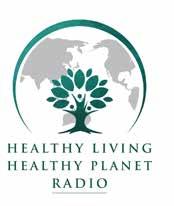
Dallas Sierra Club
Looking for an organization that shares your values of caring for the environment and love of the great outdoors?
Looking for an organization that shares your values of caring for the environment and love of the great outdoors?
Looking for an organization that shares your values of caring for the environment and love of the great outdoors?
Looking for an organization that shares your values of caring for the environment and love of the great outdoors?
Come visit one of Sierra Club’s general meetings the 2nd Tuesday of the month at the REI store at 4515 LBJ in Farmers Branch, at 6:30 pm. Sierra Club is about conservation, outings, outdoor outreach to children, and more. Find out more about activities, outings and our Memorial Day bus trip to New Mexico at dallassierraclub.org
Come visit one of Sierra Club’s general meetings the 2nd Tuesday of the month at Brookhaven College, Bldg H 3939 Valley View Lane in Farmers Branch, at 6:30 pm.

Come visit one of Sierra Club’s general meetings the 2nd Tuesday of the month at the REI store at 4515 LBJ in Farmers Branch, at 6:30 pm.
Sierra Club is about conservation, outings, outdoor outreach to children, and more. Find out more about activities, outings and our Memorial Day bus trip to New Mexico at dallassierraclub.org
Visit
Come visit one of Sierra Club’s general meetings the 2nd Tuesday of the month at the REI store at 4515 LBJ in Farmers Branch, at 6:30 pm. Sierra Club is about conservation, outings, outdoor outreach to children, and more. Find out more about activities, outings and our Memorial Day bus trip to New Mexico at dallassierraclub.org
Sierra Club is about conservation, outings, outdoor outreach to children, and more. Find out more about activities and outings at DallasSierraClub.org
4th of July trip to
Backpack in the Pecos Wilderness


Come visit one of Sierra Club’s general meetings the 2nd Tuesday of the month at the REI store at 4515 LBJ in Farmers Branch, at 6:30 pm. Sierra Club is about conservation, outings, outdoor outreach to children, and more. Find out more about activities, outings and our Memorial Day bus trip to New Mexico at dallassierraclub.org
Visit dallassierraclub.org
Visit dallassierraclub.org for info
Visit dallassierraclub.org
info
info
 by Marlaina Donato
by Marlaina Donato
Opening a brand-new box of crayons or making a happy mess with homemade salt dough can provide hours of fun for most kids, but art therapy—based in a clinical setting—can help children achieve emotional equilibrium, cultivate social skills and increase their capacity for learning. Dipping a brush into bright colors or creating a collage under the guidance of a qualified therapist can help a child express what is beyond spoken language: unprocessed trauma, emotional and physical pain or the multilevel challenges of autism spectrum disorder.
“Art therapy is completely different from arts and crafts, or even teaching a child how to do art. The idea behind art therapy is that not everyone attending therapy is able to talk about what is going on inside of them,” says Robyn Spodek-Schindler, owner of Paint the Stars Art Therapy, in Manalapan, New Jersey.
According to 2018 research published in the Journal of Applied Psychology & Behavioral
Science, painting-based art therapy has been effective in reducing symptoms of depression and anxiety in preschool-aged children. Dipping into the unconscious wellspring of creative impulse through doodling and drawing, finger painting or taking a photograph can help kids bounce back more easily from bullying or family conflicts, including divorce. Splashing color on a canvas or throwing pottery has been shown to enhance fine motor skills, increase attention spans and instill a sense of accomplishment. For those that are not
in
can foster sen sory integration and promote positive social interaction.


have worked with children who have lost a parent, experienced abuse, abandonment, consequences of addiction in the family,



[-19] anxiety and autism spectrum disorders,” says Andrea


founder and CEO of Dallas Art Therapy, in Richardson, Texas. “Many times, the body is expressing the trauma in the form of sleep disturbance, eating changes, anxiety, depression and panic attacks, to name a few. Art-making bypasses the brain’s trauma response. The art therapist is trained to support the person in the process of creation and allows the person to utilize their other sens es to express themselves.”
Wade, an art psychotherapist at the Child and Family Art Therapy Center, in Haverford, Pennsylvania, emphasizes that emotional processing cannot occur when an individual is on the alert for potential danger, a physiological response from an over stimulated amygdala. “Trauma needs to be processed for the client to gain mastery and function in a calm state versus fight, flight or freeze. Art making can also activate this area of the brain and have calming effects to counteract trauma responses,” she says.
The art therapist provides a nourishing presence without art instruction or critiquing, and sessions can be private, in a group setting or include family members. Conversation, combined with art making, is typical in any art therapy session. Schindler stresses that creating pretty images is not the goal of an art therapy session and dispels the common assumption that “the person attending art therapy needs to have either a talent in art or an interest in art. They just need the willingness to participate in a session.” Some children see immediate benefits, while others realize emotional progress after several sessions.
Art therapy, sometimes in conjunction with other modalities, not only gives children a voice, but provides them with an opportunity to stretch their wings. Group therapy, says Davis, “can look like working together to create a collaborative mural. In the process, taking turns, hearing one another’s ideas, sharing materials, respecting boundaries and each other’s art becomes an important part of meeting goals.”
During an initial art therapy assessment, Wade might ask a client to draw a family of animals, which creates an opportunity “for the cli ent to share about their own family dynamics in a safe way. If the client has experienced any type of familial trauma and I were to present the same directive as, ‘draw you and your family doing something,’ the child may be more hesitant or may shut down.”
In a world that can be overwhelming, self-expression through art can give a young person a safe harbor. Schindler accentuates hu man rapport in the clinical setting, saying, “Art, much like play, is a universal communication tool for children. Sometimes you just feel better when creating and sharing with a trusted person.”
Marlaina Donato is an author, painter and composer. Connect at WildflowerLady.com.
Sustainability Summit – 9am-4pm. Theme: Conscious Action Creates Purposeful Change: Be the Change You Wish to See in the World. Free. North Lake Campus, Irving. Tinyurl.com/ mdtbskxe.
Fall Japanese Garden Festival – Nov 5-6. 9am5pm. Enjoy traditional Japanese dance, taiko drummers, martial arts, sword demonstrations, raku pottery, food trucks and more. $6-$12. Fort Worth Botanic Garden, 3220 Botanic Garden Blvd, Fort Worth. fwbg.org.
Virtual Trees for Texas – 6-7:30pm. Learn tips on tree selection, proper planting practices, as well as proper watering, pruning, common insect issues and diseases. Free. Register: RootedIn.com.
Online: Dallas Sierra Club – 7pm. Dallas En vironmental Commission Chair Kathryn Bazan updates the Dallas Sierra Club on the progress the Commission has made this year and what’s next on the agenda in 2023. Zoom. DallasSierraClub.org.
RCE North Texas: Annual Summit – Nov 9-10. Learn from experts that are advancing SDGs in North Texas, network and collaborate with sustainability leaders, and get inspired by the work of the youth network. The University of Texas at Dallas, Davidson-Gundy Alumni Center. Sustainability.utdallas.edu/rce/#program.
The 4DWN Experience – Nov 5-6. EarthxFilm and Dickies present a 2-day event of pro-skaters, live music, film, workshops, farming, food and community. Advance: $10/day, $17/weekend pass; At door: $15/day. 4DWN Skate Park, 2633 Ferris St, Dallas. EarthxFilmFestival.org/4dwn experience.
Carrollton Runners Club Mile + 5K – 7:30am. A low-key 5K and 1-mile race every last Sun. McInnish Park, 2335 Sandy Lake Rd, Carrollton. CarrolltonRunners.com.
Sunday Service/Meditation and Purification – 9-11:30am. Participate in meditation, chant ing and readings from the Bible and Bhagavad Gita. 9-9:45am, Meditation and Purification; 10-11:30am, Service. Ananda Dallas Meditation & Yoga Center, 4901 Keller Springs Rd, Ste 103, Addison. 972-248-9126. AnandaDallas.org.

Gentle Waves – 9:15-10:15am. A healing medita tive practice that moves very slow and intentional. Gaia Flow Yoga, 3000 Blackburn St, Ste 140B, Dallas. Register: GaiaFlowYoga.com.
Celebration Service Live – 11am. Meditation, music and lessons on YouTube live: Unity on Greenville Dallas, TX or Cutt.ly/2tzQx4i. Love offering. Unity on Greenville, 3425 Greenville Ave, Dallas. 214-826-5683. DallasUnity.org.
Greater Dallas Organic Garden Club – 2:30pm. 4th Sun (Jan-Sept). Each meeting includes a spe cial speaker presentation covering many topics of interest to local gardeners. Free. North Haven Gardens, 7700 Northaven Rd, Dallas. 214-3635316. gdogc.org.

Sunday Meditation – 3:15-4:15pm. With Lynne Patterson. Class offers many meditation techniques and styles, with a focus on mindfulness and open awareness. $10. Yoga Mart, 2201 Tucker St, Ste 101, Dallas. 214-238-2433. DallasMeditates.com.

Online: Awakening Heart Meditation – 5-7pm. Interfaith mindfulness meditation, music and mes sage based on the teachings of Thich Nhat Hanh. Facilitated by Brother ChiSing. Donation accepted. Dallas Meditation Center, 727 S Floyd Rd, Richard son. 972-432-7871. DallasMeditationCenter.com.
Online: Zen to Go – 12-12:45pm. Mon-Thurs. An oasis in the middle of the day offering walking and sitting meditation followed by brief sharing. Dona tion accepted. Dallas Meditation Center, 810 We Arapaho Rd, Ste 98, Richardson. 972-432-7871. DallasMeditationCenter.com.
Meditation Mondays via Zoom – 7-8pm. Med itation Mondays focuses on the practice and the experience of various forms of meditation. Free. Unity of Dallas, 6525 Forest Ln, Dallas. 972-2337106. UnityDallas.org.
Online: Ananda Yoga Sadhana Practice – 5:157:30pm. Also Thurs. Time to recalibrate and center through this transformational practice based on the yoga teachings of Paramhansa Yogananda. Ananda Dallas Meditation & Yoga Center, 4901 Keller Springs Rd, Ste 103, Addison. 972-248-9126. AnandaDallas.org.
YES: A Young Adults Meditation Fellowship – 7-9pm. A meditation series for young adults
Virtual Horti-Couture: Garden Trends for 2023 – 9-10:30am. Learn about the newest and hottest design trends from our Rooted In experts as they dig into the best new plant varieties on the market in North Texas. Free. Register: RootedIn.com.

in their 20s and 30s. Each evening will include a beginner-friendly walking and sitting meditation, Dharma teachings and refreshments afterwards. Donation. Dallas Meditation Center, 810 W Arapaho Rd, Ste 98, Richardson. 972-432-7871. DallasMeditationCenter.com.
Hot Yoga 201 on Zoom – 6:15pm. Open to all levels. This flowing-style class links the funda mental asanas (poses) of yoga linking body, mind and breath with music. Yoga4Love Studio Cabin, Ovilla. Yoga4Love.com.
Online: Meditation for Everyone – 7-8:30pm. Classes are great for beginners that want to learn to meditate and great for more experienced meditators that want to expand their meditation. Must register: MeditationInTexas.org.
Online: Metaphysics and Meditation – 7-8:30pm. Manifestation and mysticism: 2 sides of the spir itual coin. Let us practice together, while diving more deeply into universal principles and spiritual living. Open to all. Free. A Center for Spiritual Living, 4801 Spring Valley Rd, Ste 115, Dallas. 972-866-9988. CSLDallas.org.
ImpactNights – More info: Inclusive-Econ omy.org/impactnights.
Online: Celebrate Recovery – 6:30pm. A safe community to find support, hope and freedom from the struggles and realities that we all face through transitions, hurt, pain, loss or addiction of any kind. Free. First United Methodist Church, 777 N Walnut Creek Dr, Mansfield. FirstMethodistMansfield.org.
Dallas Vegan Drinks – 6:30pm. Meets the 2nd Thurs each month at various veg-friendly locations for fellowship. Currently postponed. Facebook.com/DallasVeganDrinks.
Online: Friday Meditation Happy Hours – 5:30-6:15pm. Sessions begin every hour. Re lease stress with breath and gentle movements as you withdraw from the external and begin the journey within 15-min guided meditation. $10/session. DallasMeditates.com.

Morning Bird Walk – 7:30-8:15pm. 3rd Sat. Join Trinity River Audubon Center for a monthly bird walk and enjoy the grounds and our amazing feathered friends. $10. Trinity River Audubon Center, 6500 Great Trinity Forest Way, Dallas. Registration required: TrinityRiver.Audubon.org.
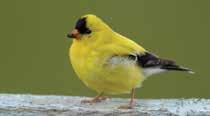
Fall Colors Hikes – Tuesdays, Nov 1-29. 12-1pm. Check out the glowing pecans, flaming sumac, and blushing oaks along the trails on a self-guided exploration of Lewisville neighborhood parks. Details: CityOfLewisville.com.

Texas Recycles Day – 8:30am-12pm. An annual event that allows residents to drive through, drop off and donate household items to our community and local non-profit organizations. Chase Oaks Church parking lot, 281 Legacy Dr, Plano. Details: Plano.gov/TRD.
Second Saturday Talk – 10am. Painted Buntings with Dr. Wayne Meyer. Learn about the beautiful Painted Buntings who spend their summers singing in the trees of Grayson County every year. Free. Hagerman National Wildlife Refuge, 6465 Refuge Rd, Sherman. 903-786-2826. FriendsOfHagerman. com.
LLELA Nature Walk – 10am-12pm. Natural ist-led nature walk. $5/vehicle. Lewisville Lake Environmental Learning Area, 201 E Jones St, Lewisville. Registration required: 972-219-3550 or llela.org.

Meadow Bird Walk – 7:30-9:30am. Birders of all skill levels welcome. A variety of birding habitats explored, and an excellent cross section of North Texas bird species can be counted. Free. Connema ra Meadow Nature Preserve, South gated entrance, behind intersection of Bass & Roberta drs, Plano. ConnemaraConservancy.org.
The Little Sit – 7am. If you want to learn how to identify the birds of North Texas, the Little Sit is the perfect way to start. A group of dedicated birders meet once a month at the end of Pad H on the West side of Hagerman National Wildlife Refuge. 6465 Refuge Rd, Sherman. 903-786-2826. FriendsOf Hagerman.com.
Night Hike – 5-7pm. Join our trail guides as they lead a moonlit stroll through the woods and across the prairie. $15/person. Lewisville Lake Environ mental Learning Area, 201 E Jones St, Lewisville.
Night Hike – 6pm. Explore the thrilling sights, smells, and sounds of night with Heard Trail Guides. $12/member, $14/nonmember. Heard Natural Science Museum & Wildlife Sanctuary, 1 Nature Pl, McKinney. 972-562-5566. Heard Museum.org.

Drip Irrigation Webinar – Bring your lunch and join the Rooted In team to learn how to install, convert and maintain a drip irrigation system. Details: McKinneyTexas.org.
Coppell Farmers Market – 8am-12pm. Year-round market. 768 W Main St, Coppell. CoppellFarmersMarket.org.
Morning Tai Chi – 8:30am. Join Tai Chi Chuan instructor George Deerfield for this in teractive class in developing strength, balance, improved breathing. Unity of Dallas, 6525 Forest Ln, Dallas. UnityDallas.org.
Second Saturday Guided Hike – 8:309:30am. Learn about our surrounding habitat while you enjoy a hike. All ages. Trinity River Audubon Center, 6500 Great Trinity Forest Way, Dallas. Registration required: TrinityRiv er.Audubon.org.
Pregnancy, Childbirth, Postpartum and Baby Classes – 6-7pm. Classes are held virtu ally online lead by our top AID instructors uti lizing state of the art visual aids and activities to keep it fun and engaging while presenting the latest evidenced based material on each topic. $35/class. Childbirth-Classes.com.
Registration required: 972-219-3550 or llela.org.
Bird Walk – 7:30-11am. Join an expert birder as we explore prime birding locations on LLELA’s nature trails. Ages 10 & up. $5/person plus $5/vehicle. Lewisville Lake Environmental Learning Area, 201 E Jones St, Lewisville. Registration required: 972-219-3550 or llela.org.
A Chance to Hike – 10am-12pm. Free guided nature walk for members of the Special Needs community will take place along the wide and level crushed-granite surface of the Cottonwood trail. Lewisville Lake Environmental Learning Area, 201 E Jones St, Lewisville. Registration required: 972-219-3550 or llela.org.
Zip Line Day – 1-4pm. Guests climb a 23-ft tree to our zip platform then proceed to a 487-ft Zip line. Purchase one ticket ($12 each) for each time you would like to travel down the zip line. Pre-reg istration required. Heard Natural Science Museum & Wildlife Sanctuary, 1 Nature Pl, McKinney. 972-562-5566. HeardMuseum.org.
In November, you begin to know how long the winter will be.
~Martha Gellhorn
NOTE: All calendar events must be received via email by the 10th of the month and adhere to our guidelines. Email Publisher@NADallas.com for guidelines and to submit entries. No phone calls or faxes, please.
Grapevine Farmers Market – 9am-6pm, Sun; 8am-8pm, Mon-Sat. Eat healthy with local ly-grown produce and products. 520 S Main St, Ste 203, Grapevine. 817-527-7446. FarmersMar ketOfGrapevine.com.

Horizon UU Worship Service – 10:30am12pm. Horizon Unitarian Universalist Church, 1641 W Hebron Pkwy, Carrollton. 972-4924940. Horizonuu.org.

Mystic Mandala Meditations – 6:30-7:30pm. Guided by Vijay Moksha. A non-denominational mindfulness practice to evolve consciousness; to go beyond the mind using the mind itself. Mys ticMandalaCenter.com.
Star Coyote Events – Monthly events include gong, Tibetan bowl and crystal bowl sound journeys, shamanic journey with a drum dance, kid’s energy and creativity events, and a Wed morning class series. Please see the calendar at StarCoyoteSoundTemple.com for the exact dates and times as they change each month or call 469-344-6484.
Frisco Fresh Market – 10am-4pm. Also Sat, 8am-4pm. Frisco Fresh Market, 9215 John W Elliott Dr, Frisco. 844-776-2753. FriscoFresh Market.com.
Sunday Celebration Service Agape Center for Spiritual Living – 10am, meditation; 10:30am, service. Noah’s Event Venue, 5280 Town Square Dr, Plano. Rev Lee Wolak: 972-468-1331. AgapeSpiritualCenter.com.


Sunday Worship: Unity Spiritual Center of Denton Service – 10am, coffee; 11am, service. Unity takes spiritual principles and makes them practical in your life. 6071 New Hope Rd, Kru gerville. 214-453-0218. UnityOfNewHope.org.
Sunday Brunch –10am-3pm. Serves up farmto-table shared plates, 72 taps (wine & craft beer), and a welcoming atmosphere to create a unique dining experience. Craft & Vine, 310 S Oak St, Roanoke. 817-464-8181. CraftAndVine. Restaurant.
Dairy Farm Tours – Mon-Sat, by appt only. Experience life on a dairy farm with an educa tional tour including how and what cows are fed, the benefits of grass-crop based feed (silage), the milking parlor, bottle feeding baby calves along with the learning the benefits of drinking raw milk vs pasteurized milk. Everyone gets samples of milk. $7/person age 2 & up. Circle N Dairy, 2074 County Road 446, Gainesville. 940-372-0343. CircleNDairy.com.

2nd Saturday Bird Walk – Sept-June. 8-9:30am. Helps beginning and intermediate birders with bird spotting and identification techniques. In cluded in general admission; free/Heard Museum members. Heard Natural Science Museum & Wildlife Sanctuary, 1 Nature Pl, McKinney. 972562-5566. HeardMuseum.org.
Buddhist Sangha Online – 7-9pm. The meeting of Horizon’s Buddhist covenant group. Med itation and study of the 8-Fold Path. Horizon Unitarian Universalist Church: Horizonuu.org.

1st Saturday Nature Walks – 10am-12pm. Monthly naturalist-led nature walk. Each season at LLELA is different, and we never know what we’ll find. All ages. $5/vehicle. Lewisville Lake Environmental Learning Area, 201 E Jones St, Lewisville. Registration required: 972-219-3550 or llela.org.

Blackland Prairie Raptor Center First Satur days – 10am-2pm. Meet raptors up-close. Take guided prairie hikes. Kids activities. Bring a pic nic lunch. Blackland Prairie Raptor Center, 1625 Brockdale Park Rd, Lucas. Erich Neupert: 972442-7607. BPRaptorCenter.org.

Connecting you to the leaders in natural healthcare and green living in our community. To find out how you can be included in the Community Resource Guide email NAadvertising@NaturalAwakenings.com to re quest our media kit.
1320 W. Walnut Hill Ln, Irving 18601 LBJ #501, Mesquite 972-444-0660
DrChapa.com
team of Doctors have trained and graduated from the best Universities and Hospitals in China, S. Korea, Taiwan and Japan. We use the best of Eastern Medi cine using Micro & Laser Acupuncture and herbal medicine for those that are in pain and suffering and have amazing success rates.
Dr. Zhangping Lu, DC, LAc, MD (China) 425 Maplelawn Dr, Ste 101, Plano 75075 972-519-8488
DFWAcupunctureChiropractic.com
Whole-body wellness center providing chiropractic care, spi nal decompression, allergy test ing, NAET, IMAET, detoxifica tion, weight loss, hormone balancing, wellness programs and more. All-natural healing, no medication, no surgery. See ad, page 35.
1033 E 15th St, Plano, 75074 214-892-2273

Plano.Cereset.com
Cereset can help your brain reset itself, restoring your brain’s rhythm naturally, en abling it to manage stress more effectively. Cereset sessions jump start the process of re-balancing your brain, and can help issues leading to trouble sleeping, restlessness and anxiety, inability to fo cus or lack of joy. Periodic “tune-ups” provide ongoing support, ensuring long-term brain bal ance. See ad on page 3.
Dr. Barrier integrates mindbody-spirit into his psychothera py practice. He specializes in Daleth Transformational Breath work, Energy Healing tech niques, and Hypnotherapy to as sist clients in releasing old patterns and creating a better life. Dr. Barrier has been a licensed psychotherapist for 30+ years. See ad on page 21.

Dr. Zhangping Lu, DC, LAc, MD (China) 425 Maplelawn Dr, Ste 101, Plano 75075 972-519-8488


DFWAcupunctureChiropractic.com
Whole-body wellness center providing chiropractic care, spi nal decompression, allergy test ing, NAET, IMAET, detoxifica tion, weight loss, hormone balancing, wellness programs and more. All-natural healing, no medication, no surgery. See ad, page 35.
11600 Welch Road, Dallas 214- 363-6311
Hockaday.org
Established almost 100 years ago, The Hockaday School provides a college preparatory educa-tion for girls; from pre-kindergarten to 12th grade, including Boarding school for grades 8-12. With an approximate enrollment of 1,000 students and a 10:1 student teacher ratio, Hockaday students enjoy a 100% acceptance rate to college.


JesuitCP.org
Jesuit College Preparatory School of Dallas is a private Catholic insti tution for young men under the di rection of the Society of Jesus. Lo cated in North Dallas, it provides a student-centered education to approximately 1,000 students, grades 9-12. Our students’ average SAT scores exceed the national average by over 200 points.

2540 Walnut Hill Ln, Dallas 75229 800-637-8337/214-902-2429
AskAdmissions@parker.edu Parker.edu
More patients want alternative methods of treatment that are healthy, holistic and non-invasive. Earning your degree from Parker University in Functional Nutri tion, Strength and Human Perfor mance, Integrative Health can put you in position to help them. Offering top level experience and accred ited by the Southern Association of Colleges and Schools, the Council on Chiropractic Education, and the Commission of Massage Therapy Accreditation.
1601 South Lamar, Dallas 214-378-1824
DCCCD.edu
Dallas College has seven campuses, including El Centro, Brookhaven, Mountain View, Eastfield, Richland, Cedar Valley and Northlake. Dallas College serves the region with ac credited one and two year certificates, degrees and core credit courses guaranteed to transfer to Texas colleges and universities.
8011 Douglas Ave, Dallas 75225
SaintMichaelsMarket.com
Market opens every Saturday, from 8am to noon, April 17th through September 25th, plus 3rd Sat. of Oct, Nov, and Dec. Locat ed in west parking lot of Saint Mi chaels Church. Local vendors and growers with 100% of products grown or made by them. Vendors adhere to CDC safety protocols. Masks provided; social distancing required.

7700 Northaven Rd, Dallas 214-363-5316
NHG.com
Serving Dallas since 1951, NHG has grown into one of the most re spected horticultural establishments in North Texas by serving our cus tomers with quality and value. Offering gardening and plant education, concierge services, DIY class es, video
more.
BAYLOR SCOTT & WHITE HEALTH
CARE SYSTEM
1-800-4BAYLOR
BaylorHealth.com/CancerCare

We have a network of comprehensive cancer treatment centers through out Dallas-Fort Worth, offering full range cancer-related and integrative medical services. Whether you want to learn about types of cancer, screenings, prevention, healthy living or support, Baylor is here for you. We offer the expe rience, expertise and technology you can trust.
13 Locations in Dallas-Fort Worth Metroplex 888-286-4603
PrimaCare.com
With 13 Urgent Care Centers, PrimaCare serves the medical needs of area families with courtesy, convenience and compassion. Open 7 days a week with extended hours. No appointment neces sary. Most insurance accepted. Use our Call Ahead Service and wait where your want. Open: Monday–Friday 8am-8pm, Saturday–Sunday 8am–5pm.
Dr. Philip Kozlow
Dr. Josh Rowell

5050 Quorum Dr, Suite 300, Dallas 972-458-2464
DallasDentist.net
We strive to provide healthy, green alter natives for our den tal patients by pro viding digital x-rays, mercury safe restor ative options and chemical free dental hygiene products. Committed to total body wellness while avoiding the use of toxic materials, and con tinuing education to ensure treatments are up to date and effective in a kind and caring environment. See ad, page 35.

Dr. D. Brock Lynn
6190 LBJ Freeway #900, Dallas 972-934-1400
LynnDentalCare.com
Practicing dentistry for over 38 years, specializing in periodontics, Dr. Lynn is board-certified and a diplomate of the American Board of Periodontics and Dental implants. He practices dentistry with a holistic approach and is a member of the In ternational Academy of Oral Medi cine &Toxicology as well as the American Academy for Oral Systemic Health. See ad, inside front cover..
Dr. Sonya Reddy 3000 FM 307, #300, Bartonville 940-301-0947


SmileUpDentistry.com
Dr.Reddy believes oral health leads to overall health and function has to coincide with form. With 15 years of experience, providing quality and compassionate care for whole family. Dr.Reddy is an ex pert in sleep, apnea, implant and orthodontic care along with regular checkups and cleanings. We provide Smart protocol in removing toxic silver fillings. See ad, page 39.
Dr. Toni Engram
415 State St #800, Richardson 75082 469-676-2777
Flourish.dental
At Flourish Dental Boutique, we believe the best dentistry is often the least dentistry. We help your body thrive on its own with thera pies that enrich and empower its natural healing processes. As a ho listic and biological dental prac tice, we choose safe materials and treatment protocols with special attention to your nutrition and overall wellness. See ad, page 5.
Dr. Becky Coats, DDS, MAGD, LVIF, FIDIA, FAACP 2631 Ira E Woods Ave, Grapevine 817-481-6888



TMJPlus.com
Instead of focusing just on your teeth, we also look at dental issues connected with other health prob lems you may be having. We collab orate with Thermography, Lymphat ic Drainage, and Osteopathic Medicine practitioners. Call today for TMJ Pain Relief, Sleep Apnea, Frenuloplasty(Tongue Tie), Biological Dentistry, Physiologic Orthodontics, Headache Relief, Mercury Fillings Removal, Metal Free Ceramic Implants.
HEALTHY HEALING ARTS/HPWWC Cathy Lemmon 469-383-8442


Cathy@HPWWC.org
HealthyHealingArts.com
Homeoprophylaxis (HP), a part of Homeopathy, is a major part of Cathy Lemmon’s practice at Healthy Healing Arts. HP has been used worldwide for hundreds of years with a success rate of over 90% to help fight off disease. Lemmon uses an energetic, non toxic means of promoting immu nity in a safe and natural way. See ad, page 42.
DR. CARLOS CHAPA, ND, OMD, L.AC, PH.D 1320 W. Walnut Hill Ln, Irving 18601 LBJ #501, Mesquite 972-444-0660
DrChapa.com
Trained in Asia, graduated from a Korean University, Dr. Chapa holds a Naturopathic Doctorate Degree and a PhD in Eastern Med icine specializing in Neurological issues. A former medic/nurse since 1995, this unique training has giv en confidence from many Physicians to refer their pa tients. Dr. Chapa is founder and medical director of AIMC established in 2009. See ad, page 10
Dr. Elizabeth Seymour, MD 399 Melrose Dr., Suite A, Richardson 214-368-4132
EHCD.COM
A nationally recognized medical fa cility specializing in the relationship of health and disease to environ mental factors. Thorough investiga tion is made to determine the cause and correlation of the patent’s dis ease process to environmental fac tors. A leader in the field treating mold exposure/sensitivity; oil spill, pesticides and chemical exposure; chemical sensitivities, immune dysregulation and much more.
Dr. Alfred R. Johnson, D.O. 997 Hampshire Lane, Richardson 972-479-0400



JohnsonMedicalAssociates.com
Johnson Medical Associates is a state-of-the-art medical clinic offer ing comprehensive medical services aimed at finding the cause not just treating the symptoms. Dr. Johnson is a doctor of internal medicine with 35+ years of experience in areas of chronic illness, toxic exposures, al lergies and the use of hyperbaric oxygen therapy to address a multitude of conditions. See ad on page 5.

Dr. Jerry Tennant MD, Medical Director

35 Veranda Lane, Ste 100, Colleyville 972-580-1156
TennantInstitute.us
Providing traditional “standard-ofcare” medicine using prescription as well as complementary medicine. Recognizing that the human body is not simply a collection of indepen dent parts but rather an integrative whole -we treat it that way. Condi tions treated include chronic fatigue syndrome, fibromyalgia, macular degeneration and glaucoma, as well as thyroid support, adrenal support, hormone replacement. essential oil therapy and hyper baric oxygen therapy. See ad, page 11.
Dr. Phyllis Gee, MD
4601 Old Shepard Pl, Bldg. 2, Ste. 201, Plano 469-361-4000

WillowbendHealthAndWellness.com
With 30 years of practice, empower ment and whole health are center pieces of our care. Our goal is find ing and treating the root cause of your symptoms to restore your health utilizing regenerative medical practices. We address functional wellness, sexual wellness, weight management. We do functional health testing. Call for appointment. See ad on page 3.
BACK2BASICS FUNCTIONAL NUTRITION BY NITI


Niti Shah, PT, MS, CNS, LDN 3365 Regent Blvd., Ste 130, Irving TX 75063 972-514-7956
Back2BasicsFXN.com
Chronic diseases like obesity, di abetes, heart disease, autoimmu nity have reached pandemic lev els. My goal is to shift attention away from suppressing symp toms with drugs—to addressing the root cause of conditions with nutrition, supplementation, life style change. As a Board-certified Clinical Nutrition ist, I will show you the transformative power of a back to basics approach.
9901 Valley Ranch Pkwy East, Ste 1009 Irving 972-580-0545
Biomodulator@senergy.us Senergy.us
We are the exclusive distributor of the patented Tennant Biomodulator® PLUS & PRO. These FDA accepted non-invasive devices are designed to offer an affordable, drug free, us er-friendly option for the indicated use of symptomatic relief for chronic, se vere or intractable pain; and adjunctive treatment in managing post-surgical and post-traumat ic pain. See ad, page 11.
ABRAMS ROYAL COMPOUNDING PHARMACY
8220 Abrams Rd, Dallas 214-349-8000
4904 W. Park Blvd, Plano 972-599-7700 ARP-RX.com
Family owned and operated since 1980, with more than 135 years of combined experience. Our pharma cists work to provide proactive solutions to restore health and wellness. We work as trusted partners with physicians and patients to develop targeted treatment plans and customized wellness programs for your unique needs. Pharmacy Compounding. Accreditation Board (PACB) certified.
Dr. Tricia Seymour, PhD, EdD, ND, LPC-S 1201 International Parkway, Ste 200, Richardson 972-792-9900


Entelechea.org
Dr. Seymour integrates mindbody-spirit into her holistic psy chotherapy practice. She utilizes rapid psychotherapy methods such as EFT, ETT, Hypnotherapy, and EMDR to assist clients in releasing old patterns and creating a better life. Dr. Seymour has been a li censed psychotherapist for 30+ years. See ad on page 21.
6808 Pastor Bailey Dr, Dallas 214-331-8522
ConcordDallas.tv
Concord Dallas is the church that grows people. Their core values are pas sion for Christ, passion for people and catalyst for change. Services are Sundays at 8:00am, 10:00am, 12:00pm and online at Streamingfaith.com. Mid-week service is Wednesdays at 7:00pm. Reverend Bryan L. Carter, Senior Pastor.


5502 Ben Davis, Sachse 972-984-8946
UnityOfSachse@gmail.com
UnityOfSachse.com
We teach positive psychology based on Spiritual teachings of Jesus. Services are held Sun days at 11:30am. Join us as we share truths and principles to help along your spiritual journey. Each week’s mes sage and all events are posted on our website for your convenience. Spiritual counseling and positive prayer available.
ROCKWALL COMPLETE HEALING & WELLNESS

2455 Ridge Road, Suite 151, Rockwall 972-771-8900
RockwallColonics.com
“Our goal is to offer our community high-quality wellness services in an ex ceptionally comfortable and healing environment. We know that time-hon ored healing tradi tions-Massage, Young Living Raindrop Therapy, Chiropractic, iV therapy, Juicing and Colonics work. RCW offers all of these things, come visit us and begin your journey to optimum wellness.
Dawn Harris, RYT500 306 W Ave F, Midlothian 214-817-8597
CrescentYogaStudio.com
Ellis county’s premier yoga studio and eco-bou tique offers a variety of weekly classes, specialty workshops, private yoga and reiki sessions as well as natural health and well ness events. Come feel your stress and tensions away. New student intro offer: 2 weeks unlimited Yoga for $20. Empowering a healthy lifestyle.
November: the last month of autumn, but the beginning of a new adventure; time to take a risk and do the unexpected.





















































